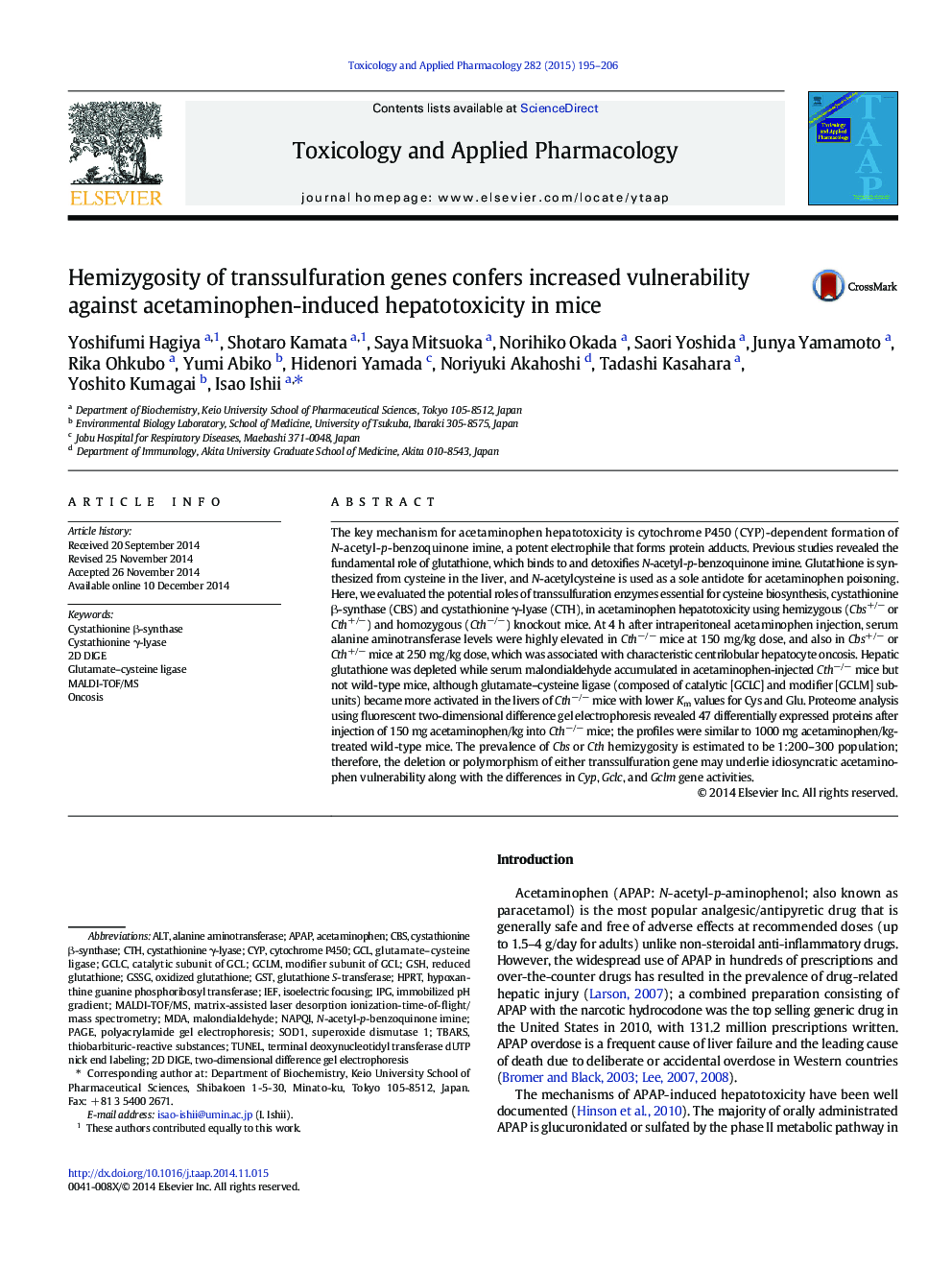| Article ID | Journal | Published Year | Pages | File Type |
|---|---|---|---|---|
| 5846115 | Toxicology and Applied Pharmacology | 2015 | 12 Pages |
•Cbs+/−, Cth+/−, and especially Cth−/− mice were susceptible to APAP hepatic injury.•Hepatic glutathione became rapidly depleted upon APAP injection in Cth−/− mice.•Hepatic glutamate–cysteine ligase was activated by APAP injection and CTH deletion.•2D DIGE identified 47 differentially expressed hepatic proteins by APAP injection.•Both transsulfuration enzymes are essential for protection against APAP injury.
The key mechanism for acetaminophen hepatotoxicity is cytochrome P450 (CYP)-dependent formation of N-acetyl-p-benzoquinone imine, a potent electrophile that forms protein adducts. Previous studies revealed the fundamental role of glutathione, which binds to and detoxifies N-acetyl-p-benzoquinone imine. Glutathione is synthesized from cysteine in the liver, and N-acetylcysteine is used as a sole antidote for acetaminophen poisoning. Here, we evaluated the potential roles of transsulfuration enzymes essential for cysteine biosynthesis, cystathionine β-synthase (CBS) and cystathionine γ-lyase (CTH), in acetaminophen hepatotoxicity using hemizygous (Cbs+/− or Cth+/−) and homozygous (Cth−/−) knockout mice. At 4 h after intraperitoneal acetaminophen injection, serum alanine aminotransferase levels were highly elevated in Cth−/− mice at 150 mg/kg dose, and also in Cbs+/− or Cth+/− mice at 250 mg/kg dose, which was associated with characteristic centrilobular hepatocyte oncosis. Hepatic glutathione was depleted while serum malondialdehyde accumulated in acetaminophen-injected Cth−/− mice but not wild-type mice, although glutamate–cysteine ligase (composed of catalytic [GCLC] and modifier [GCLM] subunits) became more activated in the livers of Cth−/− mice with lower Km values for Cys and Glu. Proteome analysis using fluorescent two-dimensional difference gel electrophoresis revealed 47 differentially expressed proteins after injection of 150 mg acetaminophen/kg into Cth−/− mice; the profiles were similar to 1000 mg acetaminophen/kg-treated wild-type mice. The prevalence of Cbs or Cth hemizygosity is estimated to be 1:200–300 population; therefore, the deletion or polymorphism of either transsulfuration gene may underlie idiosyncratic acetaminophen vulnerability along with the differences in Cyp, Gclc, and Gclm gene activities.
Graphical abstractFigure optionsDownload full-size imageDownload high-quality image (197 K)Download as PowerPoint slide
